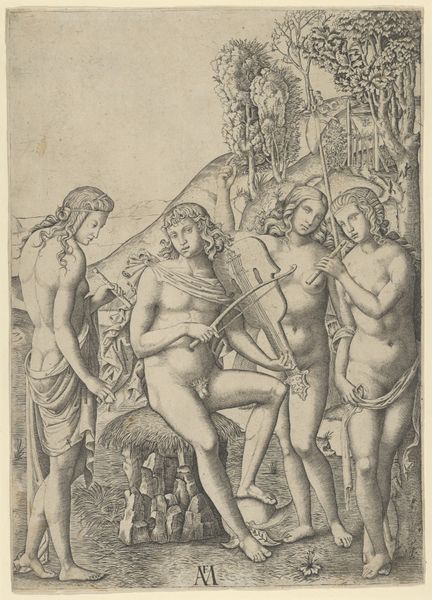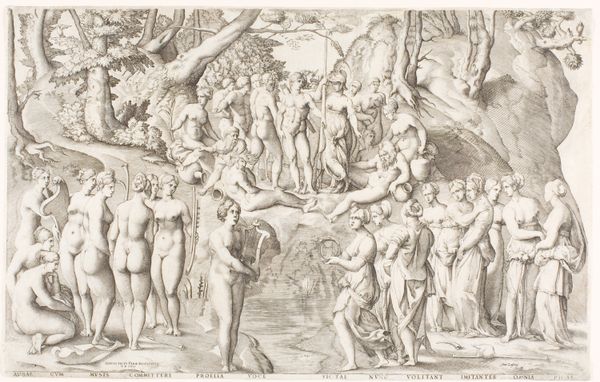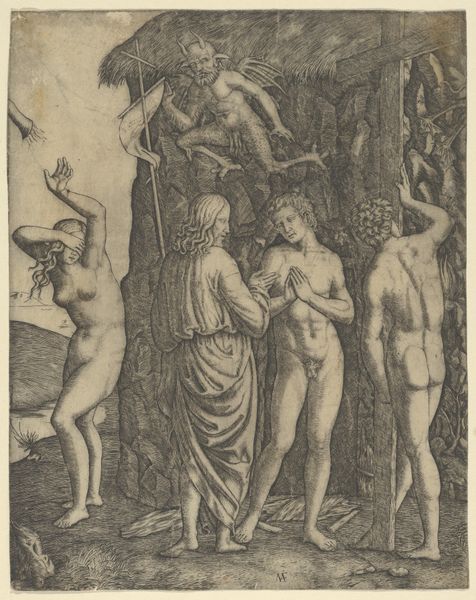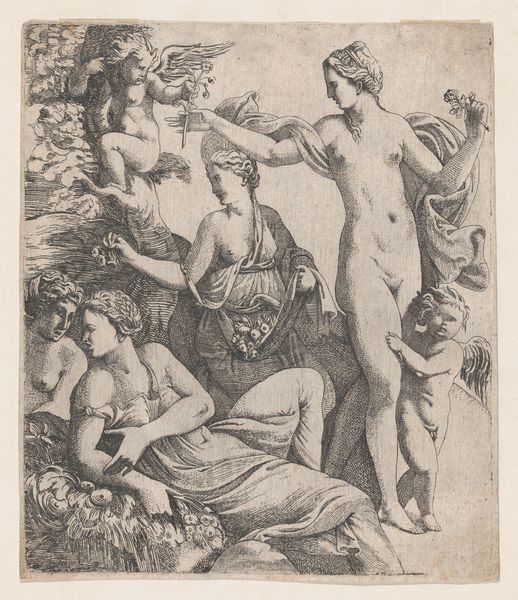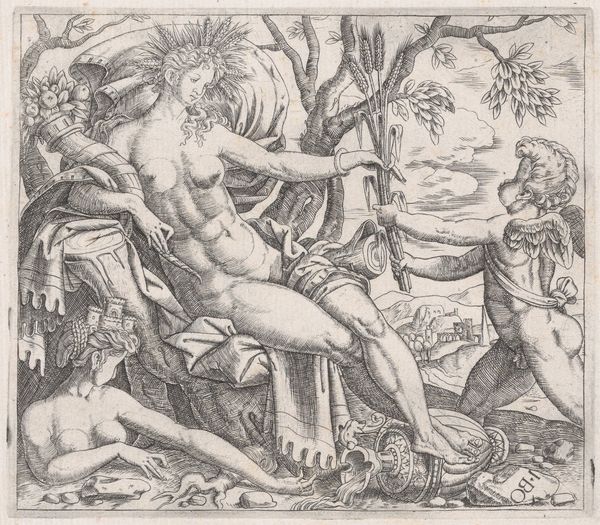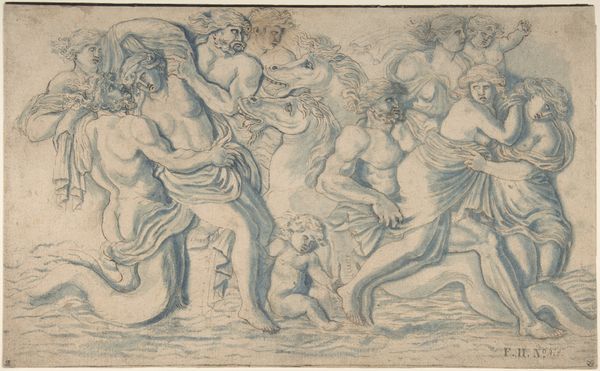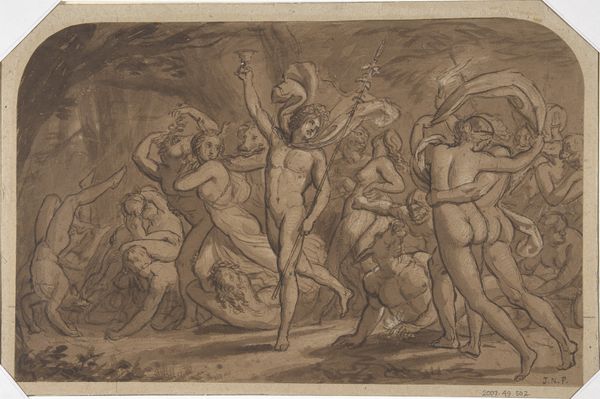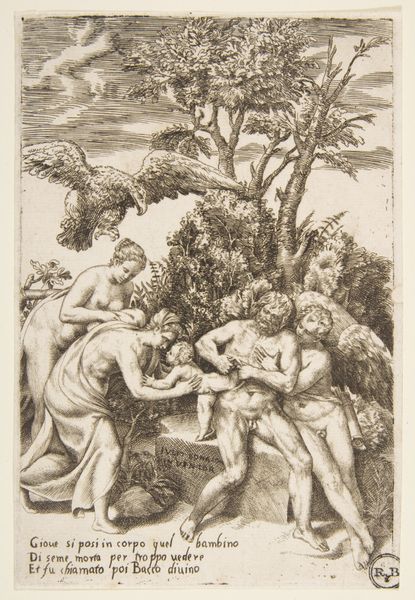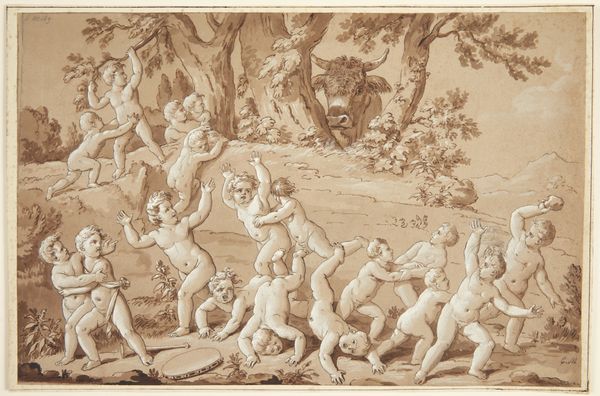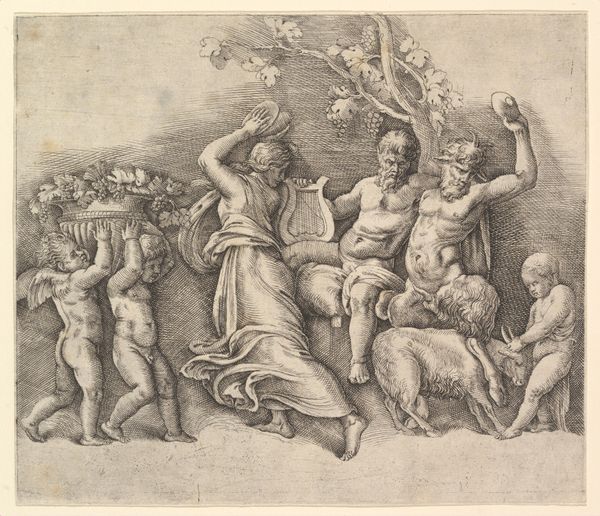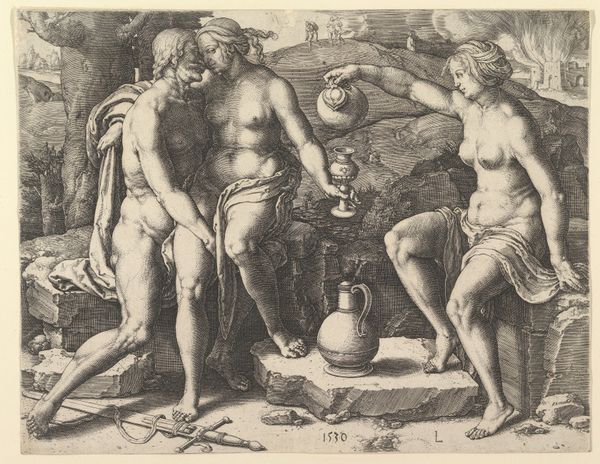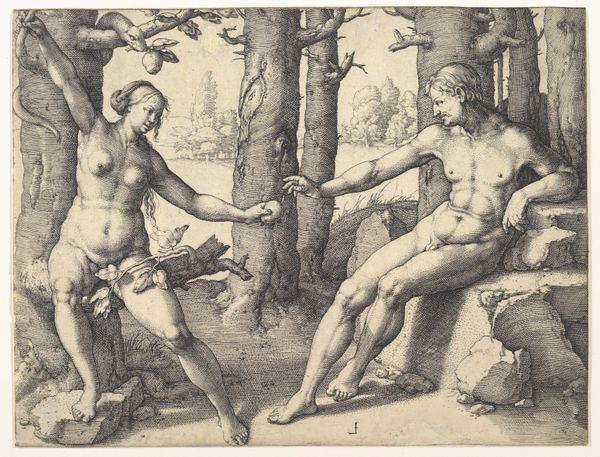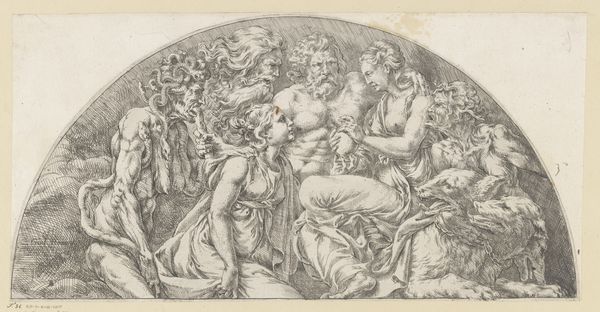
print, etching
#
allegory
# print
#
etching
#
landscape
#
figuration
#
history-painting
#
italian-renaissance
#
nude
Dimensions: sheet: 25.7 x 30.6 cm (10 1/8 x 12 1/16 in.)
Copyright: National Gallery of Art: CC0 1.0
Curator: Looking at this scene, the figures seem almost caught in a moment of tranquil revelry. The composition feels...dreamy, almost detached from a specific narrative. Editor: We're examining "Bacchus and His Attendants," an etching by Jacopo Francia dating from around 1506. What strikes me immediately is how this work embodies a tension between classical ideals and the emerging print culture of the Renaissance. Curator: Yes, the influence of classical sculpture is undeniable – those idealized nudes, the studied contrapposto poses. But the print medium democratizes the image, makes it more accessible. It speaks to new modes of consumption. And you can see it; each line feels intentionally, meticulously placed for mass reproduction. Editor: Precisely! Look at the layering of those fine lines; the way it creates a range of tonal values despite the limitations of the medium. It transforms a traditionally ‘high art’ subject into something reproducible, marketable, readily available. It becomes a commodity. The raw materiality of paper and ink contrast beautifully with the almost ethereal subject matter. The act of producing multiple identical images of an allegorical scene forces us to re-evaluate the relationship between labor, skill, and meaning. It's not just a scene, but evidence of a larger socio-economic and cultural transformation. Curator: It almost undermines its own mythological weight! Editor: In a sense, yes. The image becomes part of the very celebrations of Bacchus that it depicts! The distribution channels—who bought this, where was it displayed, how was it viewed?— those aspects are almost as important as the composition itself. Did it further reinforce certain social structures? Did its broad distribution challenge existing hierarchies of patronage and artistic taste? Curator: Right, because it allowed broader access. Thinking about Bacchus himself, though… usually such scenes are full of frenzy and overflowing with sensual energy. Yet here, the figures seem strangely contained, thoughtful. It feels...contemplative. I imagine this calm subverts the myth. What do you see in this composure? Editor: Well, perhaps it reflects a period of shifting attitudes toward these classical myths; perhaps this marks a move toward domestication, even…consumption of such themes within the new context of humanist learning and emerging bourgeois values. It asks us to look at more than the figures in isolation; the total context reveals the deeper message about the material and social implications. Curator: True; it's an intersection, and so richly complicated because of all the parts at play in that intersection. Editor: Exactly, a confluence of mythology, technique, material production, and socio-cultural shifts captured in ink on paper. A tangible example.
Comments
No comments
Be the first to comment and join the conversation on the ultimate creative platform.
